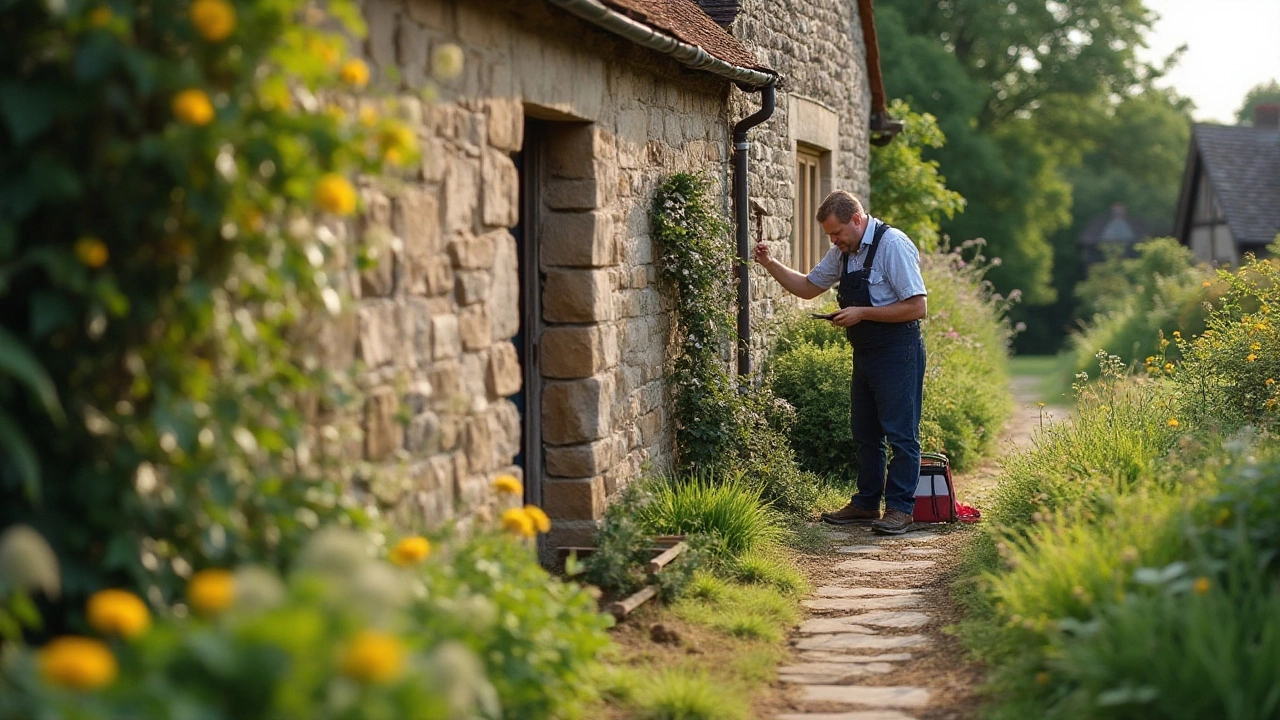Structural Repair: Quick, Practical Tips for Homeowners
Got a crack in the wall or a sagging floor? Those are signs your home’s structure might need attention. Fixing structural problems early can save you money and keep your house safe. Below you’ll find straight‑forward advice on spotting issues, deciding when to DIY, and knowing when to call a pro.
Common Causes of Structural Problems
Most structural damage comes from a few everyday sources. heavy rain can push water into the soil, causing foundation movement. Poor drainage or broken pipes under the house do the same thing. Over‑tightening bolts in a garage door, for example, can warp the surrounding frame. Even old homes settle over time, creating hairline cracks that grow if ignored.
Look for these red flags: visible cracks wider than a hairline, doors that stick, uneven floors, and windows that jam. If you notice any of them, write down where they appear and how long they’ve been there – that info helps a professional assess the job faster.
Step‑by‑Step Repair Guide
First, clear the area around the damage. Remove loose plaster, drywall, or flooring so you can see the true size of the crack. Use a utility knife to cut a clean V‑shaped groove if the crack is wider than 1/4 inch – this gives the filler something to grip.
Next, choose the right filler. For small hairline cracks, a high‑strength epoxy works well. For larger gaps, a hydraulic cement or polyurethane foam expands as it cures and fills voids behind walls. Follow the product instructions, mix only the amount you’ll use, and apply with a trowel or caulking gun.
After the filler sets, sand smooth and repaint to match the surrounding surface. If the crack keeps re‑opening, the problem is deeper – likely a shifting foundation. In that case, dig a small trench around the footings, add a concrete pier, or install steel brackets, but only if you have experience. Otherwise, call a foundation specialist.
When you’re unsure, getting a professional inspection costs far less than a full repair gone wrong. Many companies, including Premium Garage Door Construction & Services UK, offer free site checks and can advise if structural repair is a DIY job or needs expert equipment.
Finally, prevent future damage. Keep gutters clean, ensure downspouts direct water away from the house, and maintain a stable soil moisture level with proper landscaping. Small steps now keep big problems from creeping up later.
Structural repair doesn’t have to be overwhelming. Spot the signs early, follow a simple repair routine, and don’t hesitate to get professional help when the job gets big. Your home will stay solid, safe, and ready for whatever comes next.

Best Methods to Repair Foundation Cracks: Inside or Outside?
Jan 29, 2025, Posted by Damon Blackwood
Foundation cracks can pose significant risks to your home's stability. Deciding between repairing these cracks from the inside or outside is crucial for effective and long-lasting protection. This article delves into both methods, examining their pros and cons, and provides insights on the best approach depending on various factors like crack size and location. Learn tips on how to identify foundation issues early and maintain your home's foundational integrity.
MORESEARCH HERE
Categories
TAGS
- foundation repair
- commercial construction
- construction
- new builds
- home improvement
- home renovation
- bathroom renovation
- construction materials
- home foundation
- renovation tips
- residential construction
- building types
- contractor
- foundation cracks
- home construction
- architectural services
- building codes
- construction differences
- home inspection
- kitchen installation